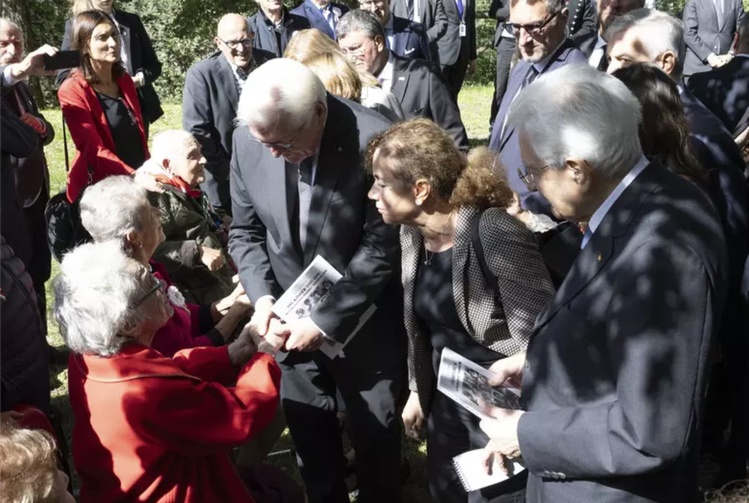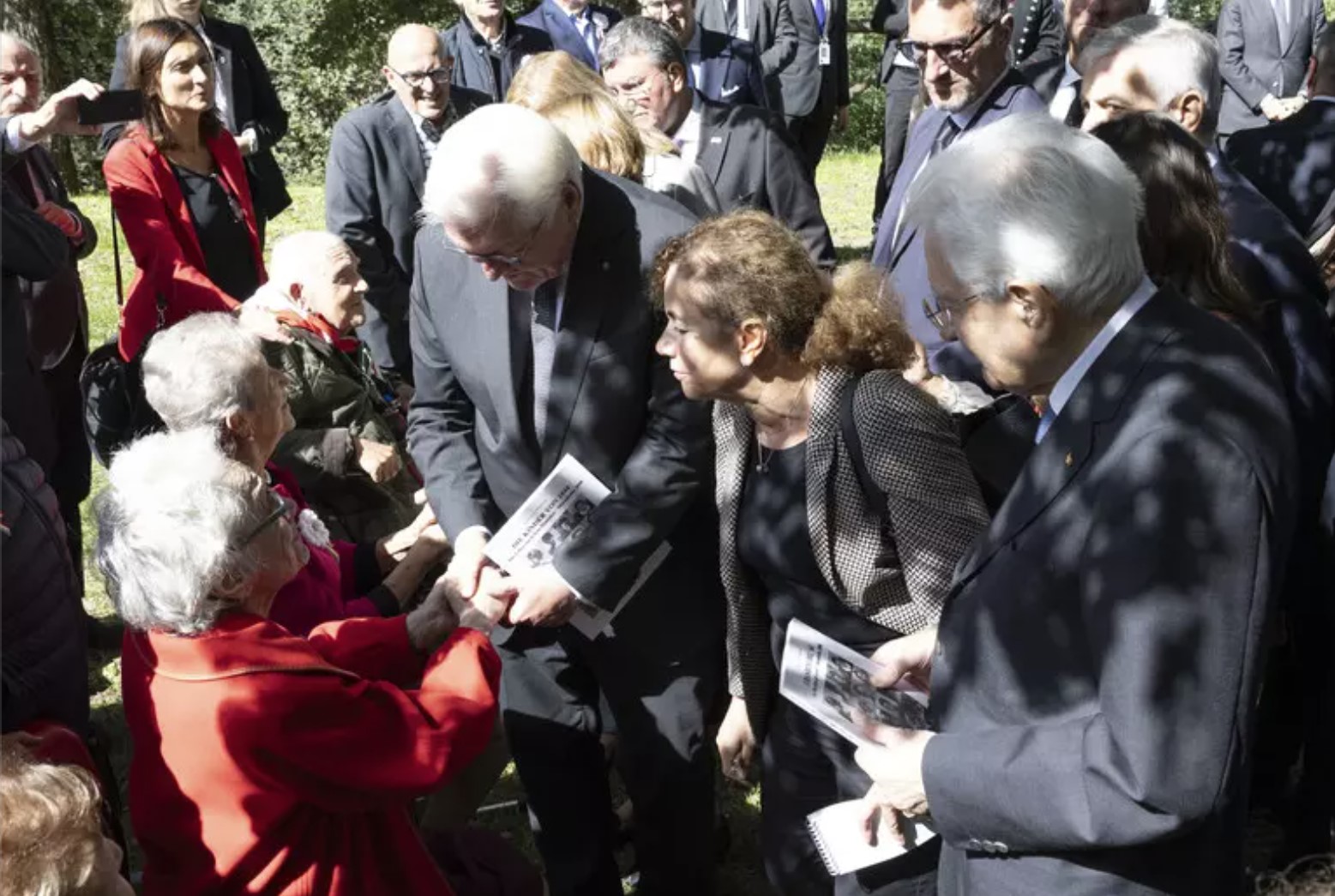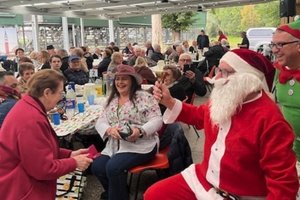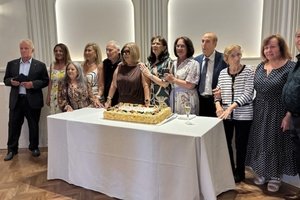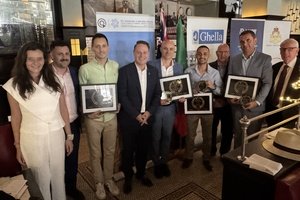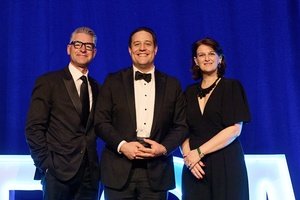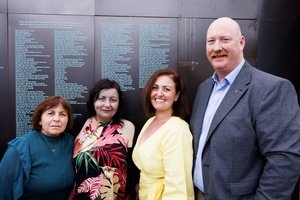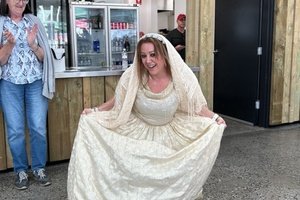Marzabotto, in the Bolognese Appenines, was the scene of one of the worst Nazi atrocities in WWII.
Waffen SS troops killed at least 770 Italian civilians from September 29 to October 5, 1944.
It was the largest massacre of civilians committed by the Waffen SS in western Europe during the war and the deadliest mass shooting in the history of Italy.
The two presidents laid a wreath of flowers to commemorate the fallen at the little San Martino Church of Monte Sole and met with survivors and members of the victims’ families.
Speaking at the ceremony, Mattarella said memory requires responsibility.
“We are here to bow our heads together in front of so many lives that were cruelly broken, to fill with the most intense feelings of solidarity those voids that inhuman Nazi-Fascist savagery opened in these lands, in these communities,” he said.
“We are here to remember, because memory implies responsibility.
“During World War II, we touched the bottom of the abyss,” he said.
“Nearly 800 victims were killed between September 29 and October 5, 1944, in the municipalities of Marzabotto, Monzuno and Grizzane Morandi.
“Nearly 200 children were killed.
“Marzabotto and Monte Sole are among the most shocking symbols of the strategy of annihilation that accompanied the will to dominate, the racial myth, the nationalist oppression” that “drove Nazism - and its accomplices, including the Fascist regime [of Italy] - to pursue the catastrophic project to conquer Europe and empty it of its history,” the president noted.
“Today, ongoing conflicts, the sites of suffering where international humanitarian law is not implemented, brusquely remind us of the responsibility of being neither blind, nor asleep, nor without memory.
“We must never forget, even if we have a hard time understanding,” he noted.
The Italian head of State went on to say that Marzabotto and Monte Sole are central to the memory of the Italian Republic and highlighted the closeness between Italians and Germans.
German President Frank-Walter Steinmeier on Sunday asked for forgiveness on behalf of his country for the Nazi massacre.
“On behalf of my country, today I ask for forgiveness,” Steinmeier said.
“Dear families, dear descendants, the fact that I can talk to you today is possible only because you have all granted us Germans reconciliation - what a precious gift,” said Steinmeier.
Recalling “those days of fall of 1944”, the German president said the SS “killed as if they were thirsty with blood”.
“[They showed] no pity, no humanity … [not even towards] women, priests, elderly men and not even for children, so many children.”
He referred to the days of the massacre as “five days from hell”.
Steinmeier went on to say that remembrance was very important “because we are experiencing a moment in which, in my country as well, we are seeing a resurgence of nationalist and far-right forces”.
“This concerns me.
“But it also gives me determination,” he stressed.
Survivors and family members also spoke at the commemoration.
“Thanks for coming here today and for honouring our dear ones who aren’t here anymore,” said Anna Rona Nannetti, one of the survivors of the massacre, who welcomed Mattarella and Steinmeier.
The German president responded thanking her and attendees for “your generosity and your welcome”.
“From my grandfather Augusto Marchioni, who lost two children and his wife here at Monte Sole, I have learned the value of forgiveness,” said Pietro Marchioni.
Marchioni lost another relative in the massacre, Ubaldo Marchioni, one of the priests killed by the SS troops at the age of 26, for whom a canonisation process is ongoing at the Vatican.
The Italian and German presidents were accompanied to Monte Sole by Deputy Prime Minister and Foreign Minister Antonio Tajani.
The Italian head of State is visiting the location for the second time. In 1992, after he had just been re-elected to the Lower House, he was the official speaker during the commemoration of the 48th anniversary of the massacre.
The last time an Italian president paid a visit to the location together with a German president was in 2002.
Then, Johannes Rau went to Monte Sole with Carlo Azeglio Ciampi on the eve of Italy’s Liberation Day on April 25.
ANSA
